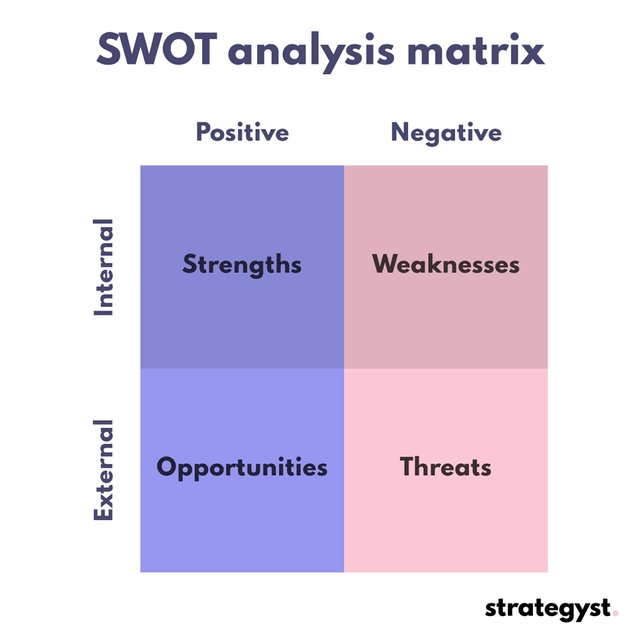How to use SWOT analysis to build excellent digital marketing strategies
If you are carrying out strategic marketing planning and want to assess how competitive your organisation is within your market, you can conduct a SWOT analysis. SWOT stands for Strengths, Weaknesses, Opportunities, and Threats. Use SWOT analysis to optimise a business’ strategy using data, giving insight into current performance, risks and potential.
The history of SWOT analysis
The SWOT analysis framework is considered by many to have been developed by Albert Humphrey in the 1960s and 1970s. Humphrey never actually claimed that he had created SWOT. He did, however, create another strategy planning framework called SOFT, which is considered the precursor to SWOT. The elements of SOFT are Satisfactory, Opportunities, Faults and Threats, which as you can see, is very similar to SWOT. Since its inception, SWOT analysis has become standard practice in business strategy.
What is SWOT analysis used for?
The primary use of SWOT analysis is to assess various factors that can affect an organisation. These factors are grouped as either internal or external, and positive or negative. SWOT is not only useful for organisations, but also an analysis of a variety of other entities, such as an industry/sector or even a person. Once SWOT analysis has been completed, it can be used to help individuals and organisations improve their respective performance.
SWOT analysis matrix
SWOT analysis can be visualised using a matrix.
The various factors of the SWOT analysis matrix are as follows:
Strengths – Internal and Positive
Strengths in a SWOT analysis are your organisation’s positive internal factors. Your organisation’s strengths should be considered relative to your competitors. For example, if you believe your organisation to be great at partnership marketing, but so are all of your competitors, then this isn’t a strength.
Examples of strengths include a strong brand, proprietary technology, a strong USP, excellent organic search visibility, and superior content marketing.
Weaknesses – Internal and Negative
Once you have evaluated your organisation’s strengths, you should be able to assess its weaknesses quickly. Weaknesses in a SWOT analysis are the negative internal factors that are affecting your business.
Examples of weaknesses include a poor pricing strategy, not enough marketing budget to achieve objectives, too small of a marketing team, and no effective brand strategy.
Opportunities – External and Positive
Opportunities in a SWOT analysis are the positive external factors that can affect your organisation. You want to identify external elements that could provide a competitive advantage.
Examples of opportunities include changes in marketing technology, changes to recruiting people with the relevant marketing skills such as UpWork and People Per Hour, changes to legislation, and shifts in sociocultural trends.
Threats – External and Negative
Threats in a SWOT analysis are the negative external factors. You need to consider the risks that could impact the performance of your business and marketing.
Examples of threats include changes in regulations, a proprietary technology developed by competitors, changing attitudes of your target audience, and rising advertising costs.
Conducting a SWOT analysis
When you are carrying out a SWOT analysis, you are analysing your internal weaknesses against strengths, and your external opportunities against threats. Conduct this analysis considering these factors relative to your competitors.
It can be easy to miss important factors when conducting a SWOT analysis. Often, people seem to fill in the SWOT analysis matrix without much thought; this is a mistake. To get the most out of a SWOT analysis, you need to approach this in an organised and effective way. To ensure your analysis is collectively exhaustive, from the MECE framework, you need to make use of two other marketing strategy frameworks – the 7 Ps and PESTLE.
When analysing your internal strengths and weaknesses, you will want to use the 7 Ps extended marketing mix. The 7 Ps framework includes the following elements: Price, Product, Place, Promotion, People, Physical Evidence, and Processes. Reviewing each of these factors will help you to ensure your information is comprehensive.
To aid your analysis of the external opportunities and threats that might affect your business, you should use the PESTLE analysis framework. PESTLE analysis covers the following factors: Political, Economic, Social, Technological, Legal and Environmental. Scrutinising each of these factors will provide you with am exhaustive list of critical external issues.
Once you have all of the data for your strengths, weaknesses, opportunities and threats, you can use your SWOT analysis to start making decisions and create a strategy.
Look at your opportunities and strengths and see if they are related. For example, perhaps you have a website that performs well in terms of SEO, and you have identified trending search terms that you have not yet optimised for. Creating new landing pages for these trending terms may mean that your website ranks quickly for them due to how good your SEO is.
You will also want to look at whether there is a close relationship between your weaknesses and threats. For instance, you might have a weak brand, and perhaps there is a new competitor that has a particularly strong brand. A situation like this is a serious threat considering your weakness. A possible approach to this might be to hire a branding agency/consultant to help you work on your brand strategy to counter your competitor.
Once this analysis is complete, as well as any other analysis you wish to use to inform your decisions, you can create your strategy and set your strategic objectives.
Wrapping up
You should now have a firm grasp of the SWOT analysis and how to conduct one. SWOT analysis is a great tool to help you build your marketing strategy. Let us know if you have any questions by leaving a comment below.
You can also reach out to us here at Strategyst if you want help with your digital marketing strategy, by contacting us on 020 3239 7960 or emailing us [email protected].
Original post: https://strategyst.co.uk/blog/how-to-use-a-swot-analysis-to-build-your-digital-marketing-strategy/
